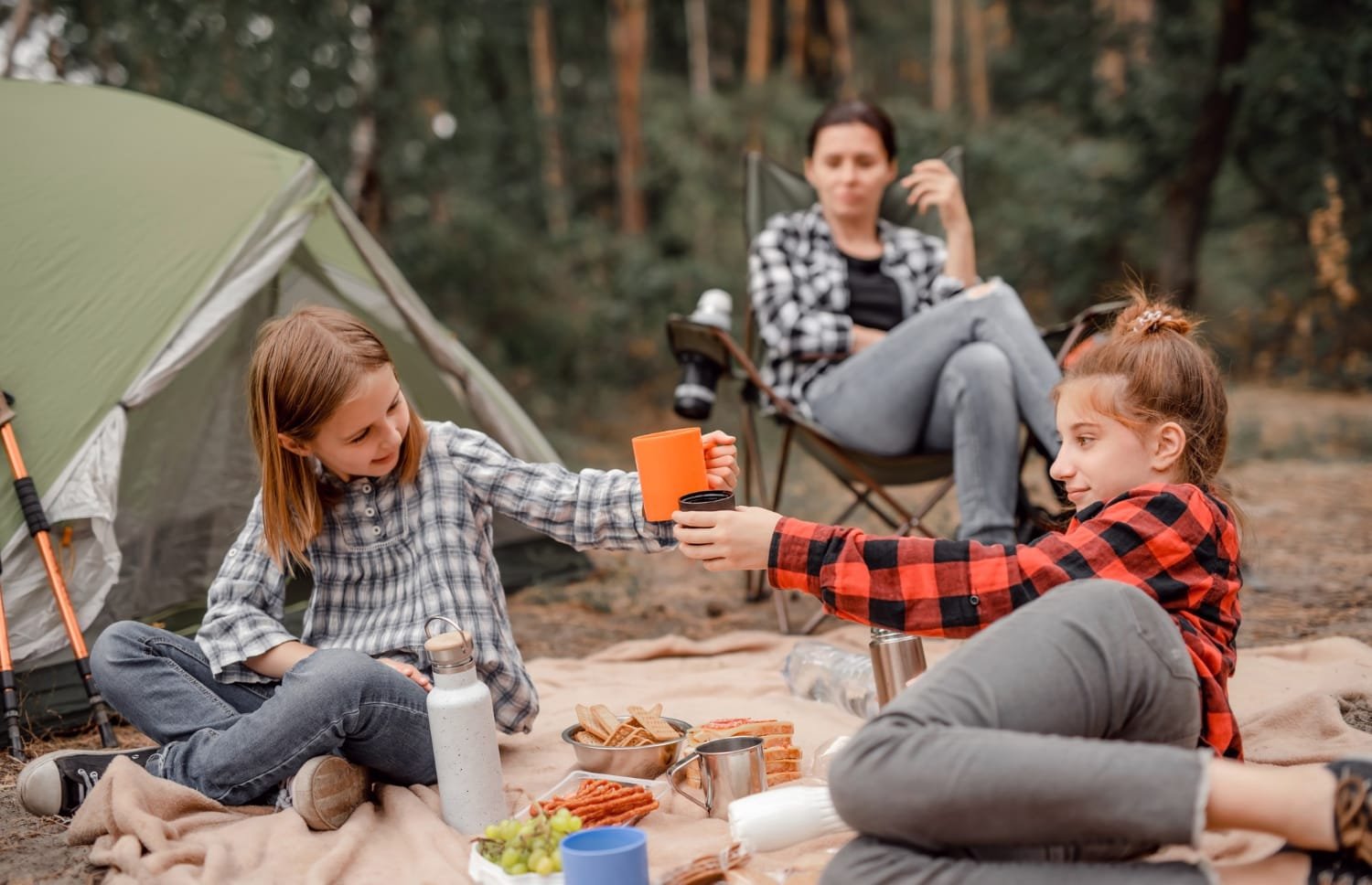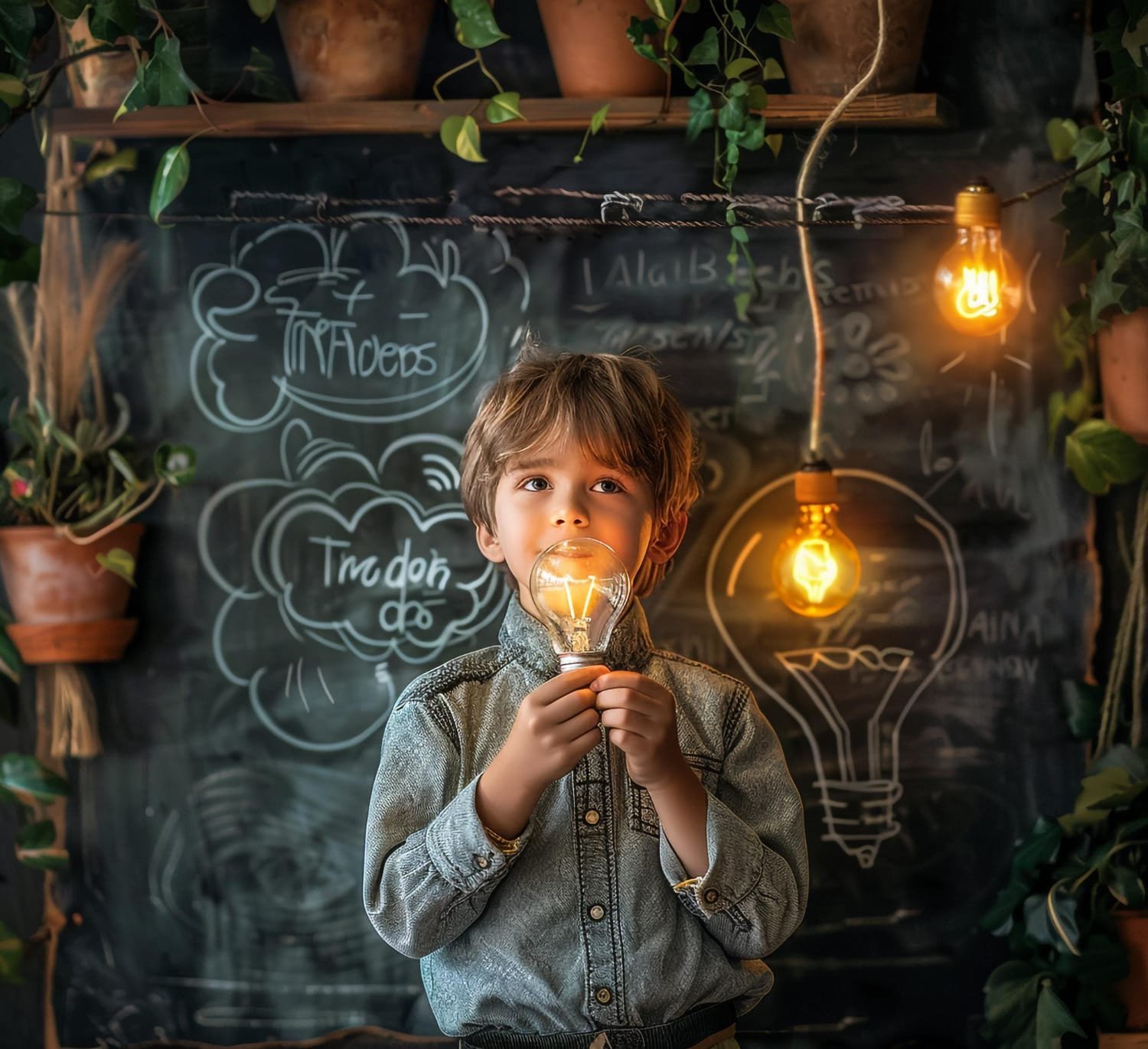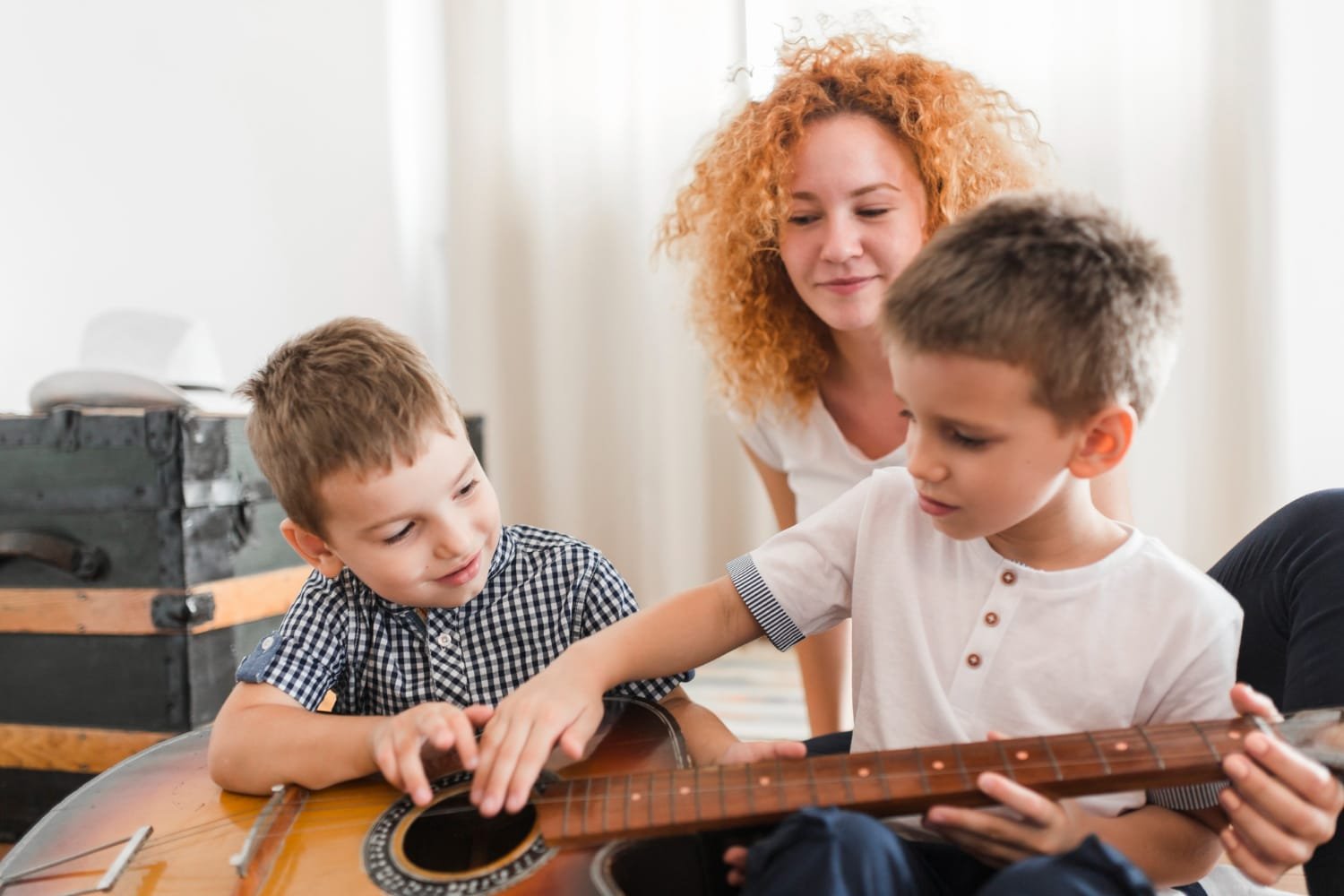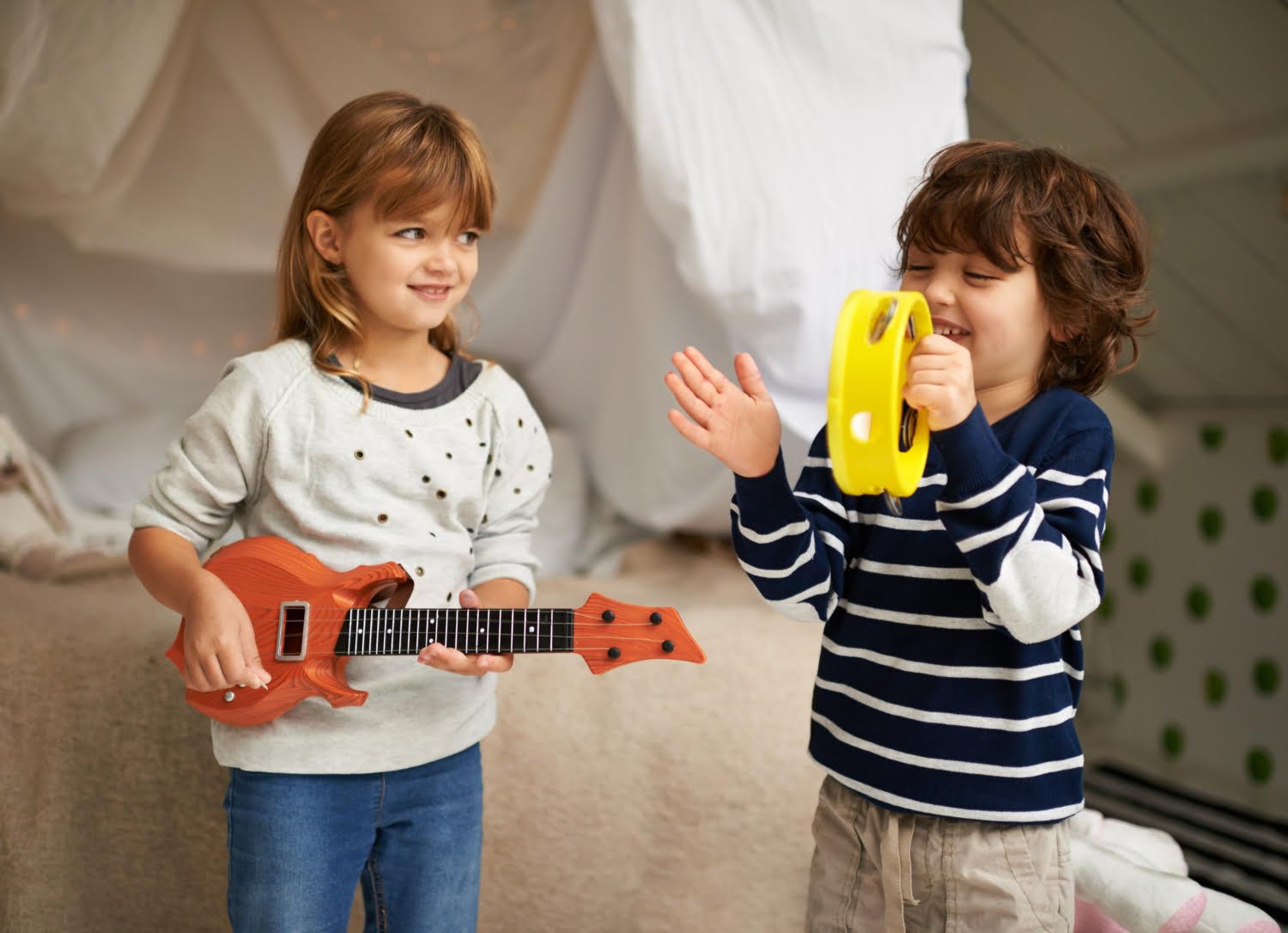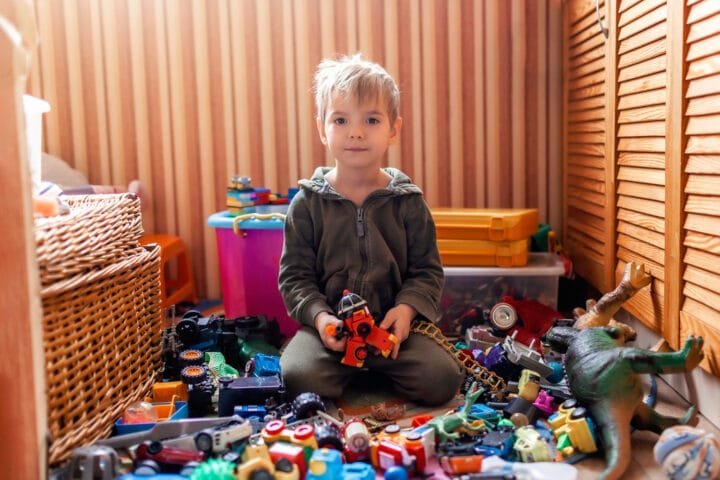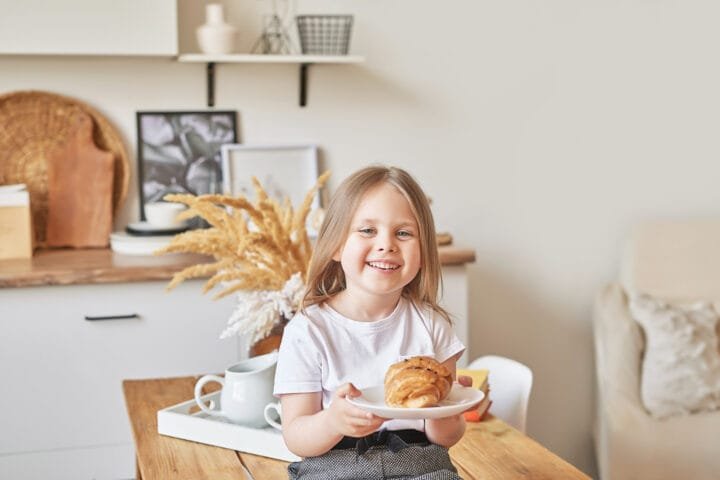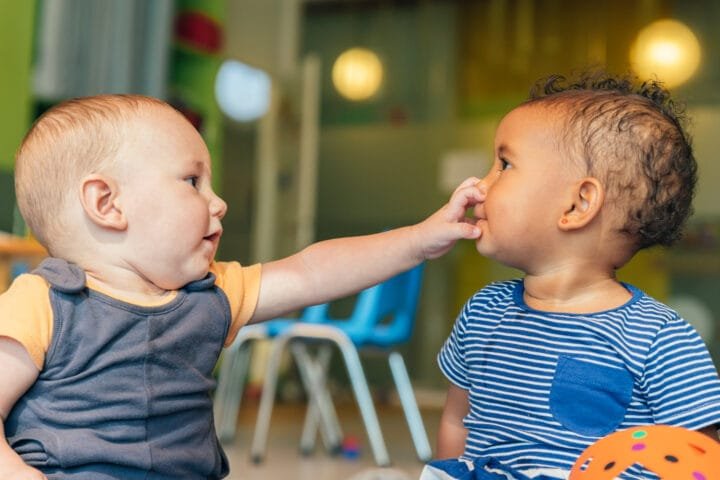Tiny Hands, BIG Art: How to Teach Art to Children!
Ever watched a kid wholly absorbed in a drawing? Maybe they’re hunched over a piece of paper, tongue sticking out in concentration, or sprawled out on the floor, surrounded by a rainbow of paints. There’s something magical about seeing a child lost in their creative world, wouldn’t you agree?
Remember those days when we were the ones with paint-splattered fingers and glitter glued to our hair? Those weren’t just ‘messy’ times but moments of pure joy, exploration, and self-discovery. As parents and educators, it’s so easy to get caught up in the daily grind of schedules and to-do lists that we sometimes forget the importance of those messy, creative moments. Let’s reignite that joy of creativity in our children and students.
But here’s the thing: art isn’t just about pretty pictures. It’s a window into a child’s soul, a way to express themselves before they have the words. It’s about allowing them to explore, experiment, and make a glorious mess without worrying about getting things right. Let’s foster this unique form of self-expression in our children and students.
Why Art Matters: It’s More Than Just a Hobby
Let’s be honest: sometimes, we see art as something to keep kids busy, right? But it’s so much more than that! Art is a universal language that allows kids to communicate their thoughts and feelings, even the big, complicated ones they don’t have words yet.
Think about it: when a child draws a picture, builds a tower, or puts on a spontaneous dance performance in the living room, they’re not just playing – they’re learning, growing, and expressing themselves in powerful ways. And that sense of accomplishment? It’s pure gold for their self-esteem.
The Amazing Benefits of Art: A Whole-Child Approach
Okay, we know art is fun, but did you know it’s also a brain booster? Seriously! When kids get creative, they strengthen their problem-solving skills, ability to think outside the box, and memory.
Picture this: a child determined to build the ultimate pillow fort. They’re not just stacking pillows; they’re figuring out spatial relationships, planning their attack (er, construction), and problem-solving when that blanket fort inevitably collapses (at least once!).
Or imagine a child carefully mixing paints to get that perfect shade of green. They’re experimenting, observing, and thinking critically without even realizing it!
And it’s not just about academics. Art gives kids a safe space to let those big emotions out. A scribbled drawing might be a way to work through frustration, while a colourful painting could be bursting with pure joy. Through art, they learn to understand those feelings and develop coping skills to help them throughout life.
Let’s not forget the social side of art, either! Remember those group projects in school where you had to create something together? Remember the negotiations, the compromises, the shared laughter? Art encourages teamwork, helps kids see things from different perspectives, and teaches them how to get along with others – skills they’ll need in every aspect of life.
Nurturing the Budding Artist: Helping Creativity Bloom
We all know every child is born with a spark of creativity, right? Our job is to keep that spark alive, to give it the space and encouragement it needs to grow into a roaring flame. And that means letting go of the idea of “perfection.”
Forget about picture-perfect drawings or museum-worthy sculptures. It’s about the process, the journey of exploration and self-discovery. Every scribble, every splash of colour, every lump of clay tells a story. Our job is to listen to those stories, to encourage those explorations, and to celebrate every step of the way.
Creating an Inspiring Art Space: Where Imagination Runs Wild
The environment matters whether it’s a dedicated art room, a living room corner, or a particular spot in the classroom. It’s about creating a space for kids to let their imaginations run wild.
At Home:
- Easy Access: Keep those art supplies within easy reach. Think low shelves, clear containers, and maybe even a child-sized table where they can spread out and create.
- Proudly Displayed: Turn your home into an art gallery! Display those masterpieces with pride. It’ll boost their confidence and show them how much you value their creativity.
- Comfort is Key: Toss down a comfy rug or some floor cushions for when inspiration strikes and they need to spread out.
- Let the sunshine In: Natural light is essential in any art space. Set up shop near a window and let the sunshine fuel their creativity.
- Small Space Solutions: Short on space? No problem! A rolling cart can become a portable art station, ready to go wherever inspiration strikes.
In the Classroom:
- Welcoming and Inclusive: Think open shelves, colourful displays, and comfy seating that works for everyone. The art area should be where every child feels welcome and comfortable expressing themselves.
- Texture, Texture, Everywhere: Add different textures to the art area – a soft rug, a wooden table, and art supplies with different feels. It’ll stimulate their senses and spark their creativity.
- Celebrating Differences: Display artwork by children from all backgrounds. It’ll broaden their horizons and teach them to appreciate different styles and perspectives.
- Accessibility for All: Make sure the art space works for every child, regardless of their abilities. Provide adaptive tools and consider different learning styles when setting up the space.
The Right Tools for the Job: Equipping Your Little Artists
Just as builders need the right tools, kids need the right art supplies to unleash creativity. And that means having a good variety of age-appropriate, high-quality materials.
Age-Appropriate Supplies:
- The Essentials: Start with the basics – crayons, markers, paint, clay, and paper. These are the building blocks of any young artist’s toolkit.
- Expanding Their Horizons: As kids grow, introduce new materials to keep things exciting. Toddlers might love chunky crayons and washable paints, while preschoolers can graduate to finer-tipped markers and modelling clay. And as they get older? Introduce them to pastels, watercolours, and even sculpting tools.
Quality Matters:
- Investing in Creativity: It’s worth investing in quality art supplies that will last. They will hold up better under enthusiastic use and produce better results, boosting a child’s confidence and pride in their work.
- Safety First: Always look for non-toxic materials with the AP seal from the Art & Creative Materials Institute. It’s a guarantee that those art supplies are safe for little hands.
Think Outside the Box:
- Nature’s Art Supplies: Remember that Nature is full of fantastic art supplies! Leaves, twigs, stones, pinecones – they can all be incorporated into art projects. Encourage kids to explore the outdoors and bring back treasures for their creations.
- Recycling for Art: Egg cartons, cardboard boxes, and plastic bottles aren’t just trash; they’re art supplies waiting to happen! Reusing materials is a great way to teach kids about sustainability and encourage them to think creatively.
Engaging Young Artists: Sparking Creativity and Exploration
Colouring books are great, but true artistic expression comes from allowing kids to experiment and explore without limitations. It’s about embracing the process, valuing their individuality, and fostering a love for the creative journey.
Embrace the Process:
- Open-Ended Activities: Encourage kids to explore different materials and techniques without worrying about a specific outcome. Try prompts like, “What kind of creature can you create with these colours?” or “Tell me a story with your art.”
- The Joy of Experimentation: Let them experiment with different materials, techniques, and styles. There’s no right or wrong way to create art; it’s all about exploration and self-expression.
Explore Different Art Forms:
- A World of Art: Introduce them to various art forms – drawing, painting, sculpture, printmaking, and mixed media. Each one offers unique opportunities for creative expression and helps kids discover their passions.
- Gradual Introduction: Start with simple techniques like drawing and painting with crayons, then gradually introduce more advanced techniques like watercolour painting, collage, and printmaking. As they gain confidence, they’ll be ready to tackle more complex forms like sculpture, pottery, or even digital art.
- Sculpting Sensations: Explore different sculpting materials, starting with playdough and moving on to clay and even homemade salt dough. Encourage them to mould, shape, and create three-dimensional wonders.
The Building Blocks of Art:
- Fundamentals of Art: Introduce the essential elements of art – shape, colour, line, form, texture, space, and value – through fun exercises and games. These are the building blocks of artistic expression, and understanding them can enhance children’s appreciation and art creation.
- Interactive Learning: Create texture collages using various materials like fabric scraps, sandpaper, and leaves. Experiment with colour mixing using watercolours or acrylic paints, observing how different hues blend and transform. Play games that focus on identifying shapes and lines in everyday objects.
A Peek into Art History:
- Meet the Masters: Introduce famous artists and their styles to spark curiosity and appreciation for diverse artistic expressions. Explore the vibrant colours of Van Gogh’s sunflowers, the abstract forms of Picasso’s cubism, or the dreamlike imagery of Dali’s surrealism.
- Recreate and Reimagine: Encourage children to recreate masterpieces in their style or use famous artworks to inspire their creations. They can paint their versions of Van Gogh’s Starry Night, construct their cubist sculptures, or even create surrealist collages.
Spark Creativity with Prompts and Themes: Igniting Imagination
Sometimes, a little spark is all it takes to ignite a child’s imagination. Providing prompts and themes can give children a starting point for their artistic explorations, encouraging them to think outside the box and express themselves uniquely.
Nature as Inspiration:
- The Great Outdoors: Encourage children to observe and recreate natural shapes, colours, and textures. Go on nature walks and collect leaves, twigs, stones, and pinecones to incorporate into their artwork. Paint landscapes, create leaf rubbings, or sculpt animals with clay.
- Bringing Nature Indoors: Create a nature corner with plants, flowers, and natural objects in your home or classroom. Encourage children to draw or paint what they see, capturing the beauty and diversity of the natural world.
Art as Storytelling:
- Visual Narratives: Combine art and storytelling by having children illustrate stories, create visual narratives, or design picture books. This encourages them to think sequentially, develop characters, and express emotions through artwork.
- Beyond Words: Encourage children to tell stories without words, using only images and symbols to convey their message. This challenges them to think creatively and communicate visually, tapping into their imagination and storytelling abilities.
Music and Movement:
- Art in Motion: Integrate art with other creative outlets like music and dance. Encourage children to paint their favourite music, creating artwork that reflects the rhythm and mood of the melodies.
- Inspired by Dance: Have them create art inspired by dance movements, capturing the fluidity and energy of their bodies in motion. They can even design costumes and props for their dance performances, bringing their artistic visions to life.
Nurturing Artistic Growth: Guiding and Supporting Young Artists
As gardeners tend to their plants, providing water, sunlight, and support, we must nurture children’s artistic growth with encouragement, guidance, and constructive feedback. Creating a positive and supportive environment allows their creativity to flourish and confidence to soar.
The Power of Positive Reinforcement:
- Celebrating Effort: Praise their effort, willingness to explore new ideas, and unique expression. Focus on the creation process rather than the final product, emphasizing the joy of experimentation and the courage to try new things.
- Building a Safe Space: Create a safe space for experimentation where “mistakes” are seen as opportunities for learning and growth. Encourage children to take risks, embrace imperfections, and see challenges as stepping stones on their artistic journey.
Celebrate the Journey:
- Focusing on the Process: Shift the focus from the final product to the creation process. Celebrate the excitement of trying new things, the joy of bringing an idea to life, and the satisfaction of expressing oneself authentically.
- Recognizing Skills: Appreciate their effort, imagination, problem-solving skills, and perseverance. Highlight the skills they develop through art, such as observation, critical thinking, and fine motor skills.
Honor Individuality:
- Unique Voices: Encourage children to be themselves and express their unique voices through their art. Avoid imposing your opinions or expectations; let their imaginations flourish, and let their individuality shine through.
- Embracing Differences: Celebrate the diversity of artistic expression. Encourage children to explore different styles, techniques, and mediums and appreciate the unique perspectives and experiences that shape each individual’s creative voice.
Providing Constructive Feedback: Guiding Without Stifling
Constructive feedback is a delicate art. It’s about guiding without stifling creativity and encouraging growth without imposing limitations. The goal is to help children develop their artistic skills while preserving their enthusiasm, individuality, and love for the creative process.
Ask, Don’t Tell:
- Encouraging Reflection: Instead of dictating what they should do, encourage children to reflect on their work and develop solutions. Ask open-ended questions like, “What do you think about the shape of that tree?” or “How could you make that tree even more interesting?”
- Promoting Critical Thinking: This approach promotes critical thinking, problem-solving, and ownership of the creative process. It empowers children to make choices, experiment with different techniques, and develop their artistic voice.
Be Specific:
- Meaningful Praise: Instead of general comments like, “This is nice,” provide specific feedback highlighting the elements you appreciate. “I love how you blended those colours to create a sense of depth,” or “The texture you created with that sponge is so unique and interesting!”
- Targeted Guidance: This shows that you’re paying attention to their work and encourages them to continue exploring those specific techniques or elements. It also provides valuable guidance that helps them refine their skills and develop their artistic style.
Offer Suggestions, Not Directives:
- Empowering Choice: Instead of giving directives, offer suggestions that enable children to make their own choices. Instead of saying, “You should add more blue to the sky,” try, “What do you think would happen if you added a little blue to the sky?”
- Fostering Ownership: This encourages them to experiment, take ownership of their work, and develop their decision-making skills. It also promotes a sense of agency and allows them to express their unique vision.
Peer Feedback:
- Sharing and Learning: Create a safe and supportive environment where children can share their artwork and provide constructive feedback to each other. This helps them develop critical thinking skills, appreciate different perspectives, and gain valuable insights from their peers.
- Building Community: Encourage respectful and encouraging feedback, focusing on specific elements of the artwork and offering suggestions for improvement. This fosters a sense of community and promotes collaborative learning.
Beyond the Classroom: Art in Everyday Life
Art education extends far beyond the confines of the classroom or the structured art lesson. Integrating art into everyday life helps children develop a deep appreciation for art, a lifelong passion for creativity, and an ability to find beauty and inspiration in the world around them.
Museums as Adventure Zones:
- Exploring Art Worlds: Visit museums and galleries with your children to explore different art styles, historical periods, and cultural perspectives. Imagine your child creating a miniature sculpture inspired by ancient Egyptian artefacts or going on a scavenger hunt to find hidden details in Impressionist paintings.
- Interactive Experiences: Many museums offer educational programs and workshops designed for children, providing interactive experiences that bring art to life.
Bringing Art Home:
- Artful Living: Create an art-rich environment at home by displaying your child’s artwork, local artists, or prints of famous masterpieces. This fosters a love for art and encourages them to see it as a part of their everyday lives.
- Talking the Talk: Engage children in discussions about art, encouraging them to express their thoughts, interpretations, and emotions. Provide them with the vocabulary and confidence to articulate their artistic experiences.
- Finding art Everywhere: Encourage them to see beauty in everyday life, from the patterns in Nature to the designs on buildings. Help them develop an artistic eye and find creative inspiration in the world around them.
Nurturing Artistic Passions: Supporting Individual Dreams
Each child is unique, with their own set of interests, talents, and passions. Pay attention to what sparks your child’s curiosity and provide opportunities for them to pursue their artistic passions. Whether painting, drawing, sculpting, music, dance, or any other creative expression, supporting their artistic passions builds confidence, self-esteem, and a sense of purpose.
- Providing Resources and Opportunities: Provide them with the resources to explore their passions, whether art classes, workshops, books, materials, or dedicated time and space for creative exploration.
- Encouraging Exploration: Encourage them to try different art forms, attend performances, visit museums, and engage with art in various ways. This exposure can broaden their horizons, spark new interests, and deepen their appreciation for the arts.
- Mentorship and Guidance: Connect them with mentors or role models who can provide guidance, inspiration, and support. This could be an art teacher, a family member, a local artist, or even an online community of like-minded individuals.
Conclusion: Empowering Creative Expression, Shaping the Future
Fostering a love for art in children is about more than teaching them to draw or paint. It’s about cultivating their imaginations, encouraging exploration, and providing the tools and guidance they need for genuine self-expression. Art is not just another school subject; it’s a fundamental aspect of the human experience that allows us to connect with ourselves, others, and the world around us.
By integrating art education into their lives, we help children become confident, creative individuals who bring beauty, innovation, and inspiration to the world. We equip them with the skills to navigate a complex and ever-changing world – critical thinking, problem-solving, communication, and collaboration. We foster their empathy, resilience, and emotional intelligence, helping them become well-rounded individuals who can positively impact their communities and beyond.
And you know what? It’s not just about the future. Art enriches their lives right now. It gives them a way to understand the world, to express themselves, and to find joy in the everyday. It’s about those moments of pure absorption when they’re so focused on creating that the rest of the world melts away.
Art is a gift, a journey, and a lifelong adventure. Let’s embrace the power of art to transform children’s lives and shape a brighter future for all.
FAQs
Absolutely! You don’t need to be a professional artist to nurture your child’s creativity. It’s more about fostering their love of exploration and self-expression. Think of yourself as a guide, providing the tools and encouragement they need to discover their artistic voice. Focus on the process, not the product. Let them experiment, make a mess, and have fun! You might even find yourself rediscovering your inner artist along the way.
Colouring books are an excellent way for kids to develop fine motor skills and explore colours, but it’s essential to encourage them to go beyond the lines and create their masterpieces. Try offering open-ended art prompts like, “What kind of creature can you create with these colours?” or “Imagine you’re on a magical adventure – draw what you see!” You can also introduce them to art forms like painting, sculpting, or collage. Remember, the goal is to spark their imagination and let their creativity flow freely.
There’s no magic number regarding how much time children should spend on art. Even short bursts of creativity can be beneficial! The key is making art a regular part of their routine, whether dedicated art time each day or simply incorporating creative activities into playtime. Follow your child’s lead. If they’re engrossed in a project, let them explore it fully. If they’re losing interest, it’s okay to take a break and come back to it later.
Turning your home into an art gallery is a fantastic way to celebrate your child’s creativity and boost their confidence. You can frame their artwork and hang it on the walls, create a rotating display on a bulletin board or refrigerator, or even string up a clothesline to showcase their latest creations. Another fun idea is to create a special art book where you can collect and preserve their artwork over time.
It’s perfectly normal for children to get frustrated when their artistic vision doesn’t quite match the reality of their creation. This is an excellent opportunity to teach them resilience and the importance of embracing “mistakes” as learning experiences. Encourage them to experiment with different techniques, try again, or even incorporate the “mistake” into their artwork in a creative way. Remind them that art is about the process, not perfection, and that every creation is unique and special.
Related Posts
